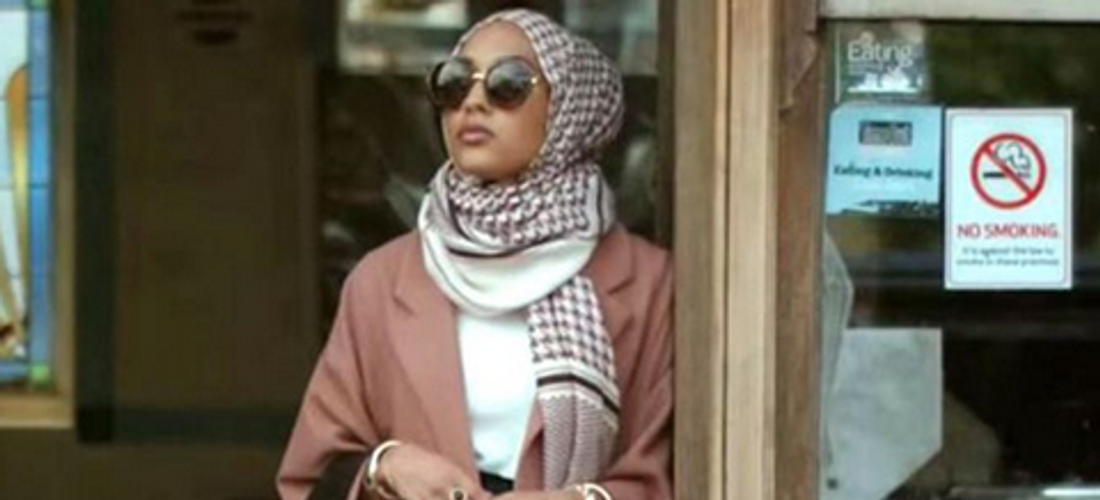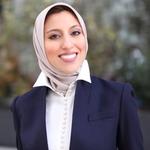What H&M's Hijab-Wearing Model Means for Muslim Women - ELLE.com
Current Events
|
Sep 30, 2015
|
4 MIN READ


Click here to read the original post.
Something interesting is brewing in fashion. You may have caught glimpses of it–long sleeve evening gowns à la Valentino, Oscar de la Renta caftans, maxi and midi skirts hanging on racks at the mall–it's the modesty movement and it's currently picking up speed. At the forefront of this movement are often times Muslim women who don the hijab or headscarf–and for good reason. The hijab has become the symbol of modesty in dress.
NBC Today recently reported on the momentum of the modesty movement, DKNY made a splash as they announced their Ramadan collection, The New York Timestook notice of the hijab fashion boom cropping up on Instagram and then–this happened. Gasp. A Muslim hijab-wearing model in a mainstream fashion ad. (Excuse me as I pick my jaw up off the ground). But I can't say that I'm entirely surprised. Just take a look at the Instagram pages of Ascia AKF, Dian Pelangi, and Dina Tokio, to name a few. These influencers are huge, amassing millions of followers. These bloggers and designers (myself included) are impacting a whole new generation of women around the world by reclaiming the narrative via social media and illustrating what a veiled Muslim woman looks like in 2015.Brands are finally taking note of what I've been advocating since I founded the fashion brand Haute Hijab in 2010–that Muslims (in this case Muslim women) are a thriving, fully-functioning and active segment of society who deserve to be acknowledged and heard. It's no wonder Fortunemagazine deemed Muslim women as the next big untapped fashion market. Now let me be clear (mainstream fashion brands, I'm talking to you), the hijab is not a fashion statement. It's a religious garment with deep and profound significance that has roots going back to the Virgin Mary. Wearing this piece of cloth means, "I respect my body and guard my modesty out of devotion to God." It makes some people uncomfortable, because to wear it is to reject the notion that women need to wear less in order to be liberated. The concept of hijab in fact turns that contention on its head–arguing that to cover up is the real liberation from society's ingrained perception that a women's value is reduced to her sexual allure.And please, the notion that wearing hijab in the West is a form of oppression is so played out. Hijab-wearing Muslim women living in the West are vocal, smart, and empowered–not different than any other collective of women. You may have watched Amanda Saab compete on this past season's Master Chef while donning hijab, or maybe you've heard of Lena Khan, writer and director of The Tiger Hunterfeaturing some Hollywood heavyweights due out later this year. Or how about Ibtihaj Muhammad, star fencer looking to bring home the gold for Team USA at the 2016 Olympics? Muslim women who wear hijab are more present than ever.This past July, I attended a roundtable in Italy on modest fashion alongside other major players in the Islamic fashion industry sponsored by Thomas Reuters and the Global Islamic Economic Summit. Questions regarding regulation, Islamic finance, and the definition of "Islamic" fashion were among the issues discussed. One notion was made clear–Muslim consumers do not want to be force-fed. Yes, it's great that Tommy Hilfiger, Zara, and Mango are now offering lines specifically devoted to the Ramadan season–but to couple that effort with seductive ads of women showing too much skin means they've missed the mark. Yes, the market is lucrative and relatively untapped, but it's also very nuanced and deeply rooted in faith. (Read on for my tips on how to market to the Muslim demographic from Inc.com). The significance of Mariah Idrissi wearing hijab in the H&M campaign is noteworthy for a number of reasons, not the least of which being that she's fiercely stylish in her hijab. Mariah represents the millions of hijab-wearing women who have a voice, who are pumping with intellect and enthusiasm and who possess a very real need to find appropriate, modest clothing. Mariah is another gleaming reference point along the modest fashion continuum that will inevitably continue because confident Muslim women who wear hijab with pride are here to stay.Melanie Elturk is the CEO of Haute Hijab, an online retailer for modest fashion. Melanie aims to instill self-confidence in hijab-wearing women worldwide, and in addition to her clothing and hijab line, she facilitates support for those struggling with hijab in addition to highlighting inspiring women who contribute to their communities in significant ways. By providing compelling and innovative products and connecting with her customers in a meaningful way, Melanie has propelled Haute Hijab from a cult favorite to a household name with a loyal following and dynamic social media presence. You can follow her on Instagram @hautehijab.
Subscribe to be the first to know about new product releases, styling ideas and more.
What products are you interested in?

